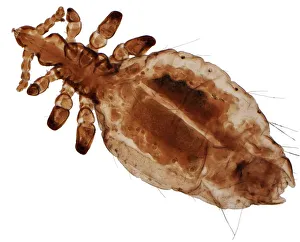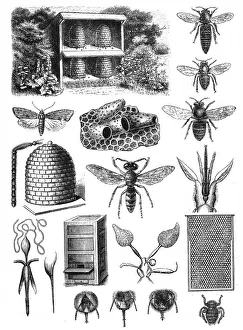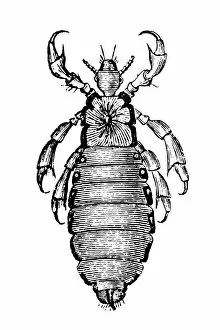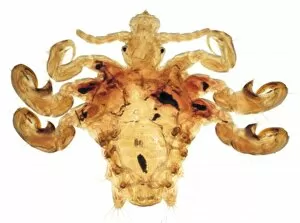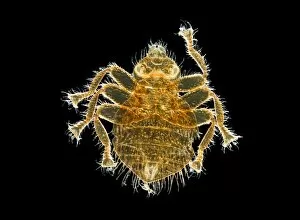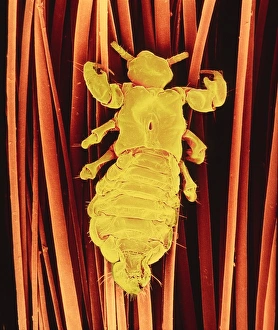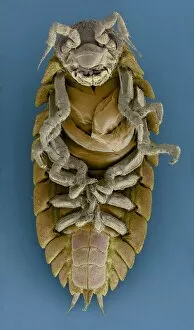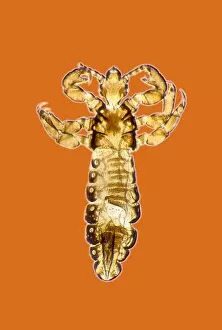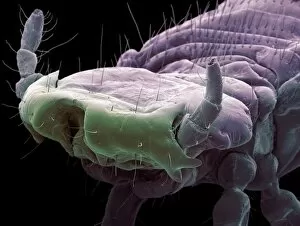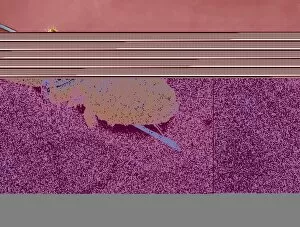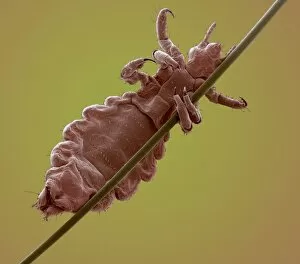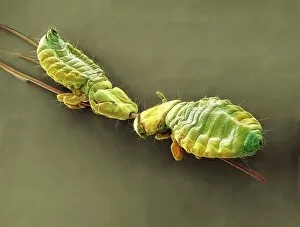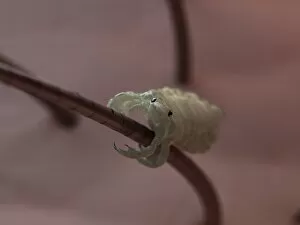Body Louse Collection
Body lice are small, parasitic insects that live and feed on human skin, and are closely related to head lice
Choose a picture from our Body Louse Collection for your Wall Art and Photo Gifts
56 items
All Professionally Made to Order for Quick Shipping
-
Body Louse Collection
Body lice are small, parasitic insects that live and feed on human skin, and are closely related to head lice, but prefer to live in clothing and bedding rather than on the scalp. Body lice lay eggs (called nits) which attach to the fibers of clothing or bedding near the body. The eggs hatch into nymphs which look like small adults and feed on blood from the host's skin. If left untreated, body lice can cause severe itching and irritation of the skin as well as spread diseases such as typhus and trench fever. To prevent infestation, it is important to keep clothing clean by washing regularly in hot water and drying at a high temperature, and is also important to avoid sharing personal items such as combs or towels with others who may have body lice.
+
Our beautiful pictures are available as Framed Prints, Photos, Wall Art and Photo Gifts
The Body Louse collection from Media Storehouse features a variety of high-quality images showcasing the unique characteristics and behaviors of these insects. Our collection includes wall art, framed prints, photo prints, canvas prints, jigsaw puzzles, and greeting cards that are perfect for insect enthusiasts or anyone interested in learning more about these fascinating creatures. Body lice are parasitic insects that live on human skin and clothing. They can spread diseases such as typhus and trench fever and were responsible for many deaths during World War I. Despite their negative reputation, body lice have also been studied extensively by scientists due to their ability to adapt to changing environments. The Body Louse collection offers a range of stunning photographs capturing the intricate details of these insects up close. From their distinctive segmented bodies to their tiny claws used for clinging onto hair fibers, each image provides a glimpse into the world of body lice. Whether displayed as wall art or sent as a greeting card, our collection is sure to fascinate anyone with an interest in entomology or natural history.
+
What are Body Louse (Louses Insects Animals) art prints?
Body louse art prints are high-quality reproductions of illustrations or photographs featuring body lice, which are parasitic insects that live on human skin and clothing. These prints can be used for educational purposes in schools, universities, and medical facilities to teach about the life cycle, behavior, and health implications of these tiny creatures. They can also be displayed as decorative pieces in homes or offices by individuals interested in entomology or natural history. The Body Louse art prints available at Media Storehouse feature a variety of styles and formats including vintage engravings, scientific drawings, and modern photographs. You can choose from different sizes and framing options to suit their preferences. The prints are produced using state-of-the-art printing technology on high-quality paper stock to ensure vibrant colors and sharp details. Whether you're a scientist looking for accurate depictions of body lice or an art lover seeking unique wall decor, Body Louse art prints offer something for everyone with an interest in this fascinating insect species.
+
What Body Louse (Louses Insects Animals) art prints can I buy from Media Storehouse?
We offer a wide range of Body Louse art prints that you can purchase. You can choose from various styles, sizes, and framing options to suit your taste and preferences. The collection includes high-quality photographs and illustrations of Body Louses in their natural habitat or close-up shots that capture their intricate details. You can find stunning images of the different species of lice, including head lice, body lice, and pubic lice. These prints showcase the unique characteristics of each type of louse, such as their size, coloration, and behavior. In addition to individual prints featuring these insects alone or in groups, Media Storehouse also offers collections with multiple images on one print. These compilations are perfect for creating a themed display or adding interest to any room. Whether you're looking for educational resources or simply appreciate the beauty found in nature's smallest creatures - there is something for everyone at Media Storehouse.
+
How do I buy Body Louse (Louses Insects Animals) art prints?
To purchase Body Louse art prints, you can visit our online gallery. We offer a wide range of high-quality prints that are perfect for decorating your home or office space. You can browse through our extensive collection of Body Louse artwork and select the one that best suits your taste and style. Once you have found the print you want to buy, simply add it to your cart and proceed to checkout. At this point, you will be asked to provide your shipping information and payment details. Once your order has been processed, Media Storehouse will ship the print directly to your door. Whether you're looking for a unique piece of art for yourself or as a gift for someone special, buying Body Louse art prints from Media Storehouse is easy and convenient. With their vast selection of artwork and hassle-free ordering process, you'll be able to find exactly what you're looking for in no time at all.
+
How much do Body Louse (Louses Insects Animals) art prints cost?
The cost of Body Louse art prints may vary depending on the size, material, and framing options chosen. The prices for these prints can be found on our website, where a wide range of Body Louse art prints are available for purchase. These prints feature high-quality images of the insect in various poses and settings, making them perfect for anyone interested in entomology or nature photography. We offer a variety of sizes to choose from, ranging from small to large formats that can fit any space. Additionally, customers have the option to select different materials such as canvas or paper to suit their preferences. While prices may vary based on these factors, you can expect competitive rates for all products offered by Media Storehouse. Purchasing Body Louse art prints is an affordable way to add unique and interesting decor to any home or office space.
+
How will my Body Louse (Louses Insects Animals) art prints be delivered to me?
Your Body Louse art prints will be delivered to you in a safe and secure manner by Media Storehouse. The company uses high-quality packaging materials to ensure that your artwork arrives at your doorstep in perfect condition. Depending on the size of the print, it may be rolled up and shipped in a sturdy tube or flat-packed with protective cardboard backing. We work with trusted shipping partners to deliver your order efficiently and reliably. You can track the progress of your shipment through their online tracking system, which provides real-time updates on its whereabouts. Once you receive your Body Louse art prints, you can display them as desired - whether it's framing them for hanging on a wall or placing them on a shelf or desk. With their vibrant colors and intricate details, these prints are sure to make an eye-catching addition to any space.

